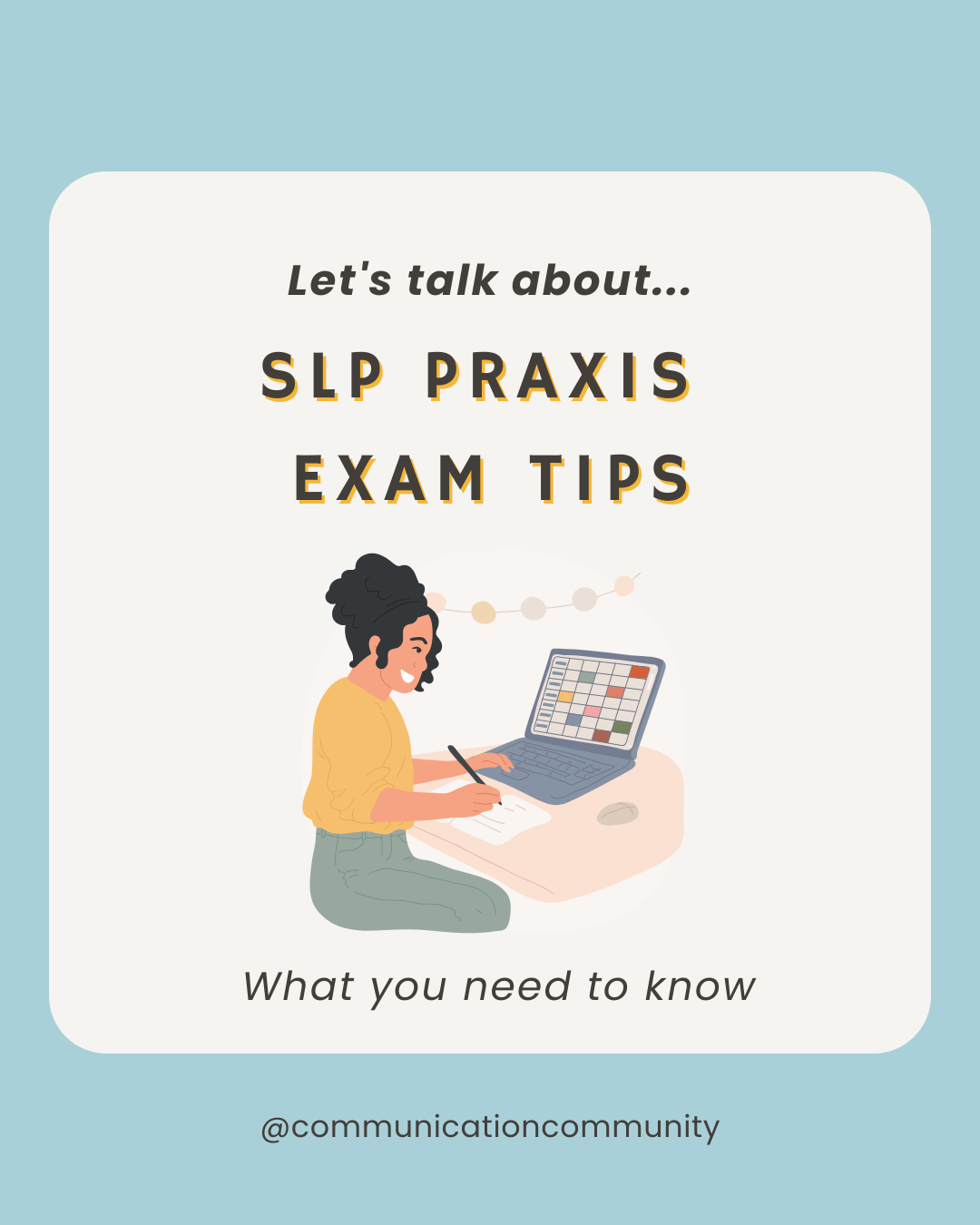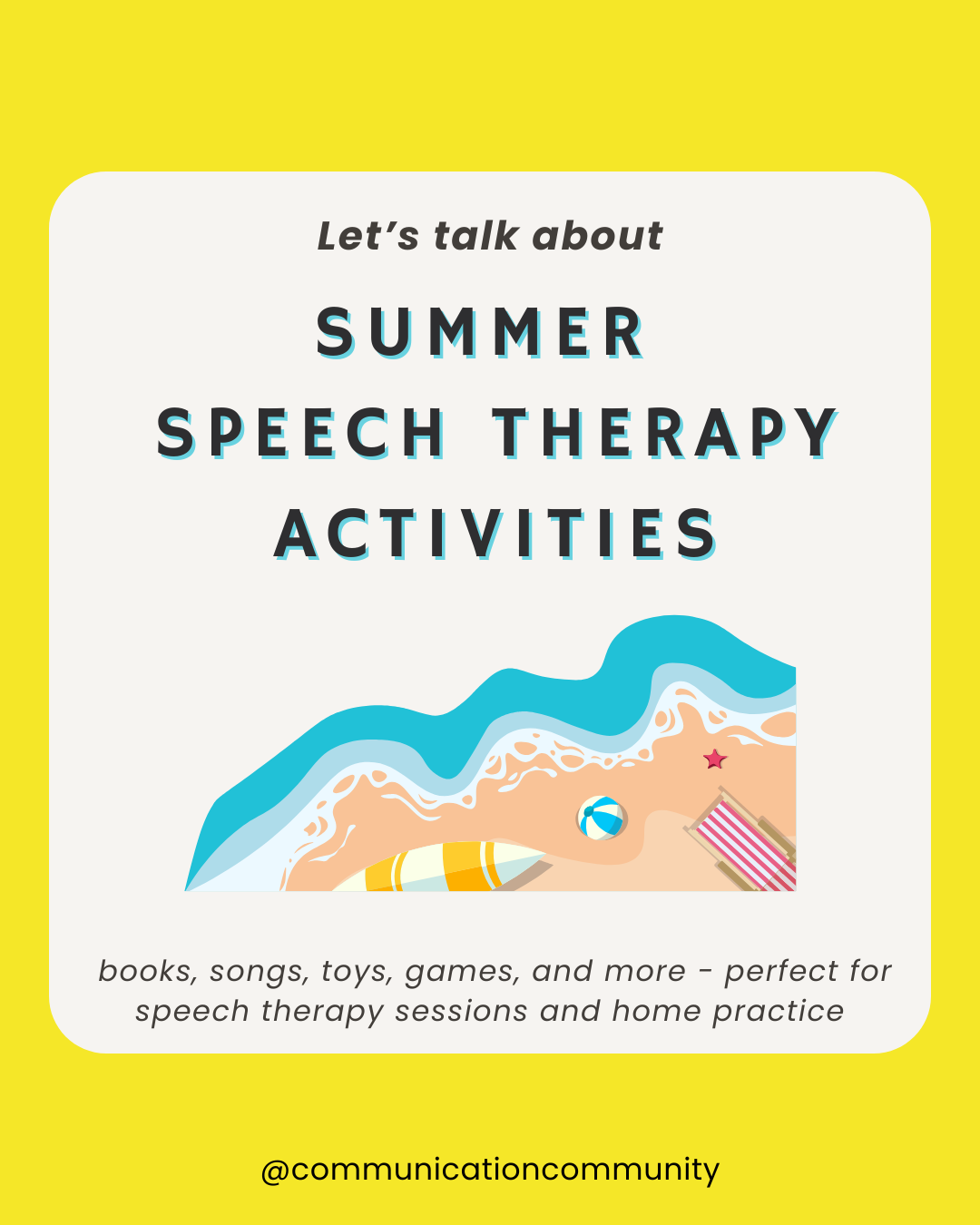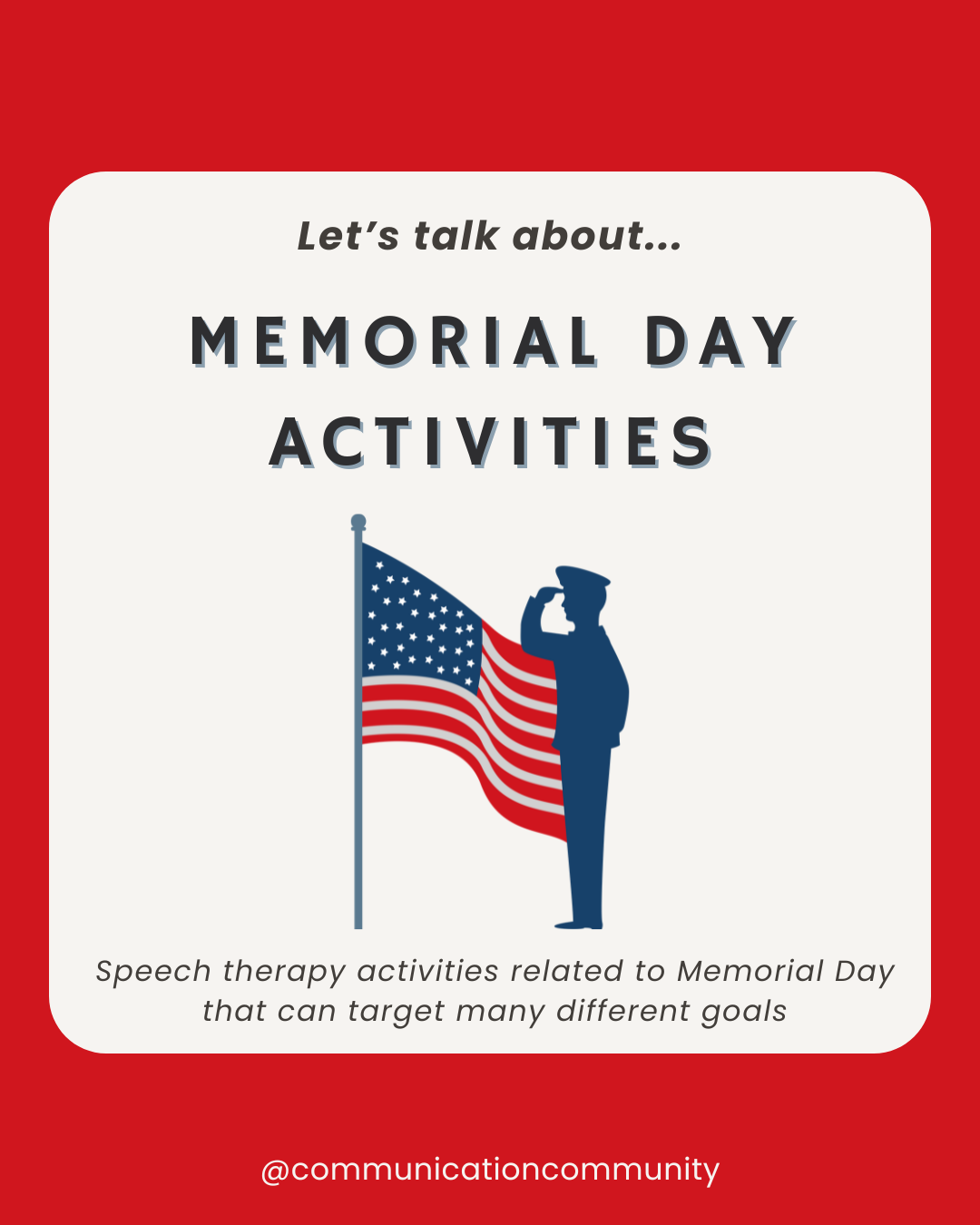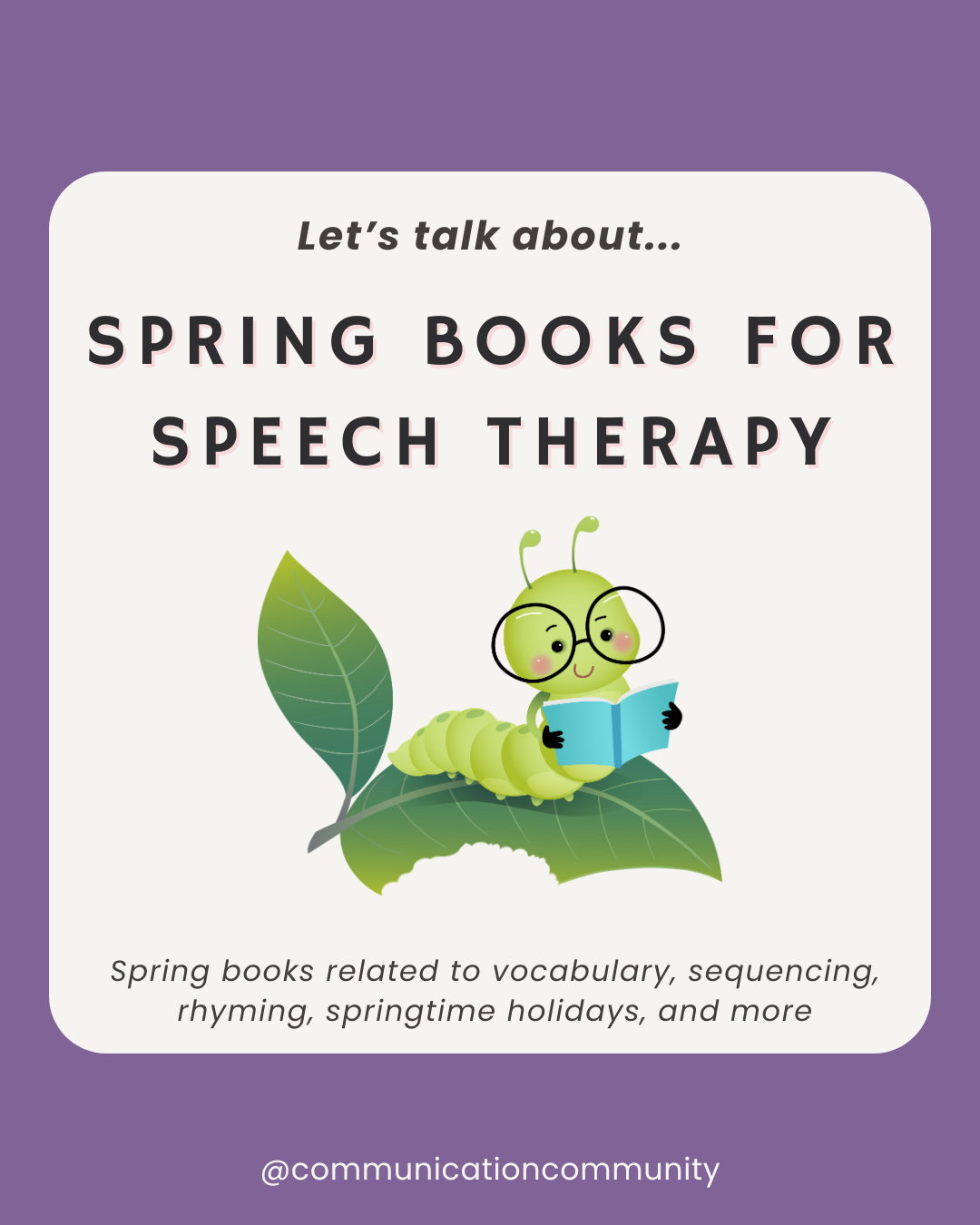One of our seasonal favorites is pumpkin decorating. We enjoy this activity because there are so many options for decorating and we (of course) love to incorporate projects like these into building speech and language.
We have included FIVE different pumpkin designs and fun ways to target speech and language while still getting in touch with our creative side. Not really in the mood to get your hands dirty? We’ve got Halloween BINGO boards for that! Check out our latest ~spooky~ BINGO board from our post earlier this month…
Ways to target speech and language:
Prepositions - there are many many ways to incorporate prepositions (think: in, out, on, under, above, around, etc.) into this activity! And this can be targeted with whichever design you decide on. Receptively, prepositions can be worked on in several ways. For example, use them within directions e.g., “Show me the eye next to the pink sparkles” or when manipulating materials e.g., “Draw a circle around the stem.”
Sequencing - rehearse following a visual sequence (think: step-by-step handout) while crafting your pumpkin or prepare for the activity ahead of time. How do you do that? Make small square-sized cut outs of each material or step that you will be following. Then, practice placing each picture in order of the way you will perform the activity. With this visual, you can also work on temporal words and concepts (e.g., “Point to what you do ‘after’ you use the glitter” or “Show me what comes last”).
Following directions - from single-step to multi-step directions, there are many ways to incorporate receptive language skills (aka following directions) into each of these designs. And remember, directions don’t always have to be ones you say! You can incorporate multi-step directions into a handout; with or without visuals (written text and pictures/solely pictures). If you are working in a group or in teams, have each individual be responsible for delivering one direction. This can be an opportunity for them to take turns having a leadership position and giving a concise direction to a group.
Descriptive concepts - arts and craft projects certainly lend themselves to colorful materials… perfect for building on adjectives and descriptive language concepts (think: color words, like ‘green’ or texture-related words, like ‘rough’). Rehearse these concepts incidentally during the completion of the activity or when the activity concludes in a written format (e.g., write 3 sentences to describe you/your friend’s pumpkin). Don’t forget to incorporate antonym descriptive terms (e.g., “Is the pumpkin 'hard' or 'soft'?” or “Is the glue 'wet' or 'dry'?”).
Body parts - for the pumpkin designs that involve facial features, this is an opportunity for the person(s) you are working with to label and/or identify parts of the face on their pumpkin. If you want to make it slightly more challenging, you can ask the individual to name each of the body parts they think should be on the face before presenting the materials. You can also prompt with questions such as, “What should we add next?” or “Show me where the [body part] goes.” For labeling, point to each feature on the face and have the individual say what it is; for identifying, state the body part and direct the individual to, “Point to” or “Show me [body part].” Generalize by asking them to label/identify on their own face too!
Social (pragmatic skills) - if you are working one on one or in a group, this is a great opportunity to practice turn-taking! Turn-taking is an important skill that children learn to develop during play and it is something that also carries over into speaking and conversations. If working one of one, you can take turns decorating each pumpkin by alternating each step. Work on phrases like, “You’re next!” or “Your turn!” to indicate to your partner it’s time to switch. In a group? Have each individual be in charge of one of the necessary materials. If someone needs a different material than the one provided, they can approach the person who has it and make a full sentence request (e.g., “Can I borrow the glue?”).
Pumpkin designs*
*General design tip: pumpkin decorating is fun, but can also be messy! We advise that you decorate on a flat, large surface that can be covered with an old sheet or newspapers.
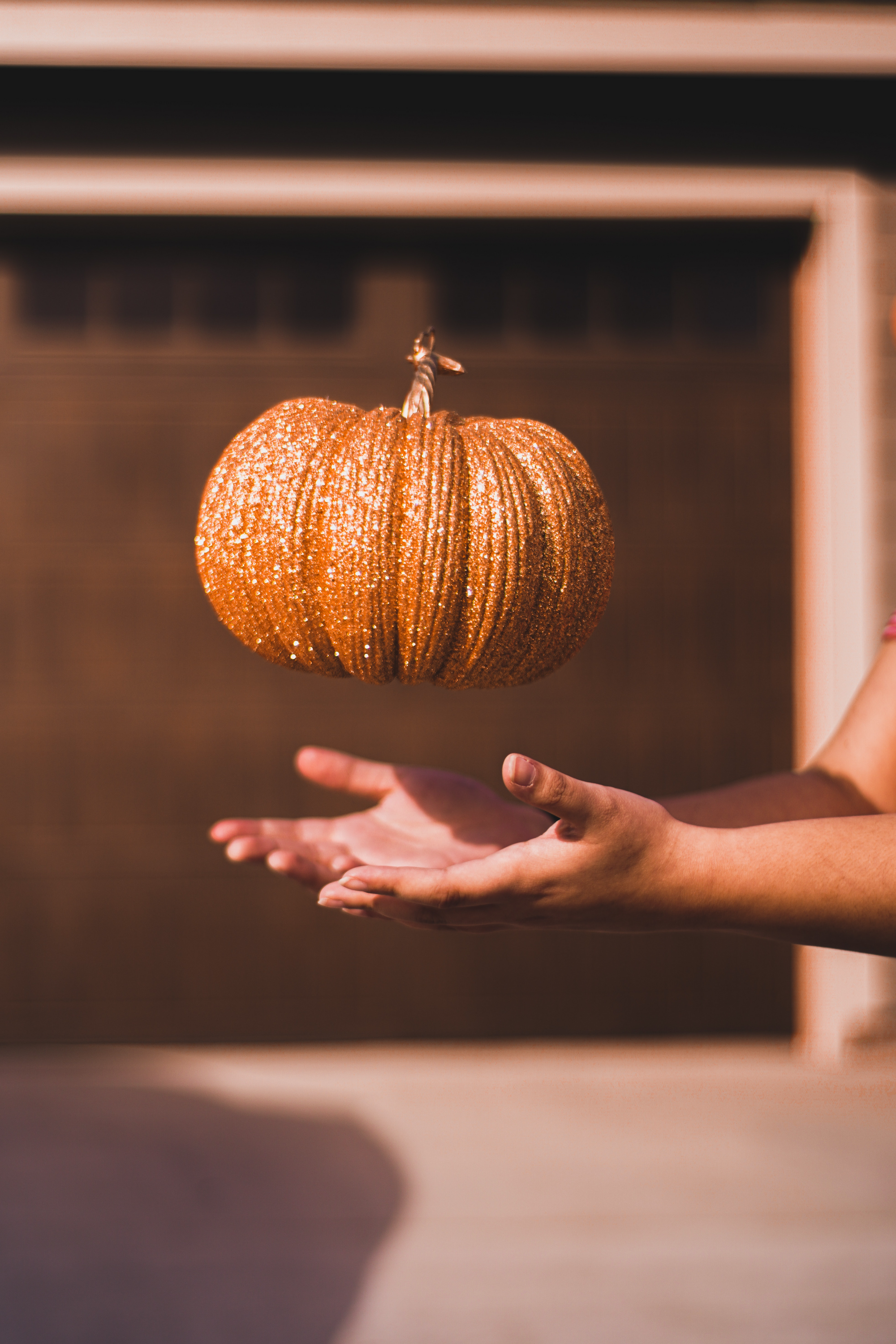
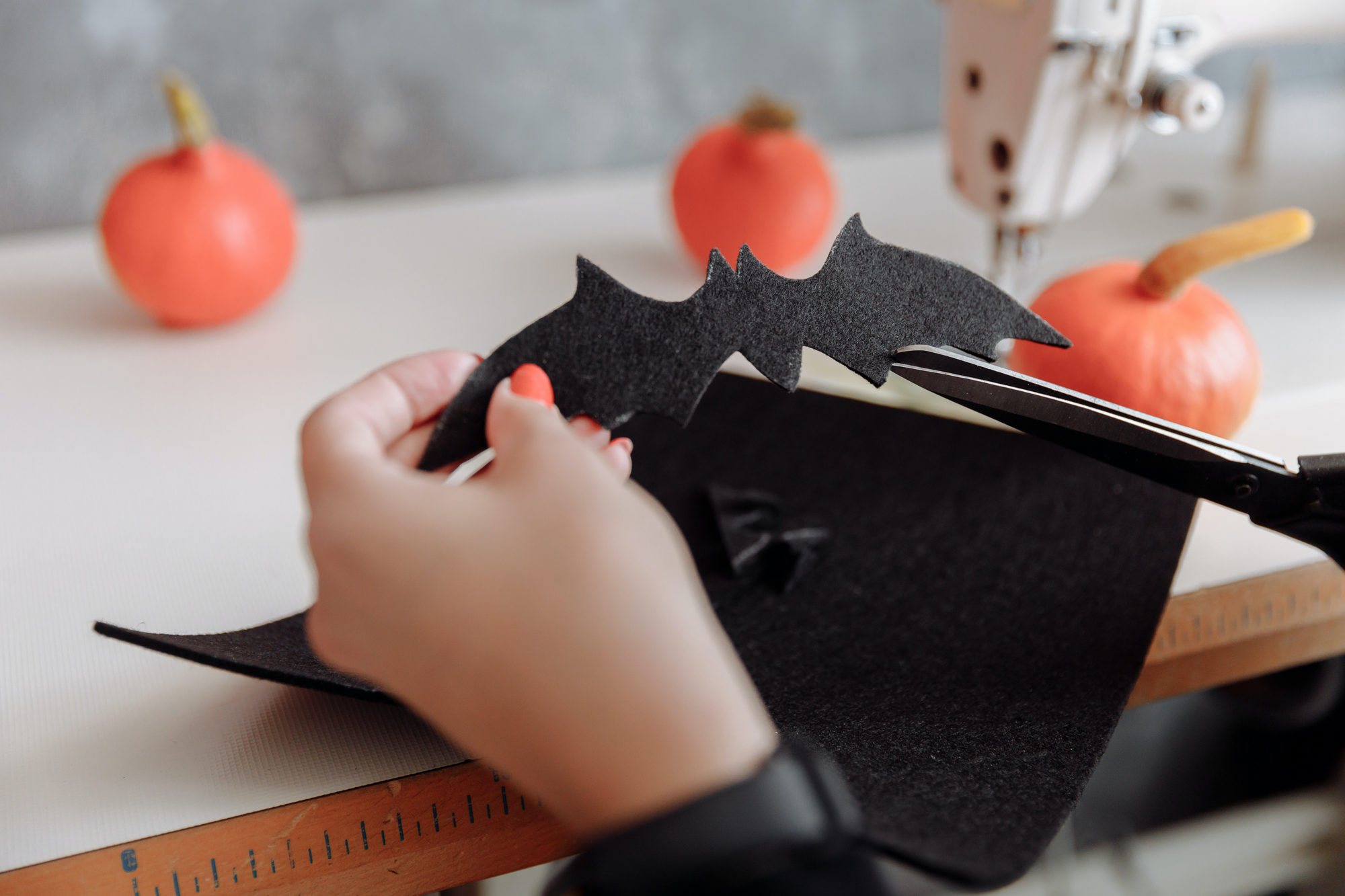
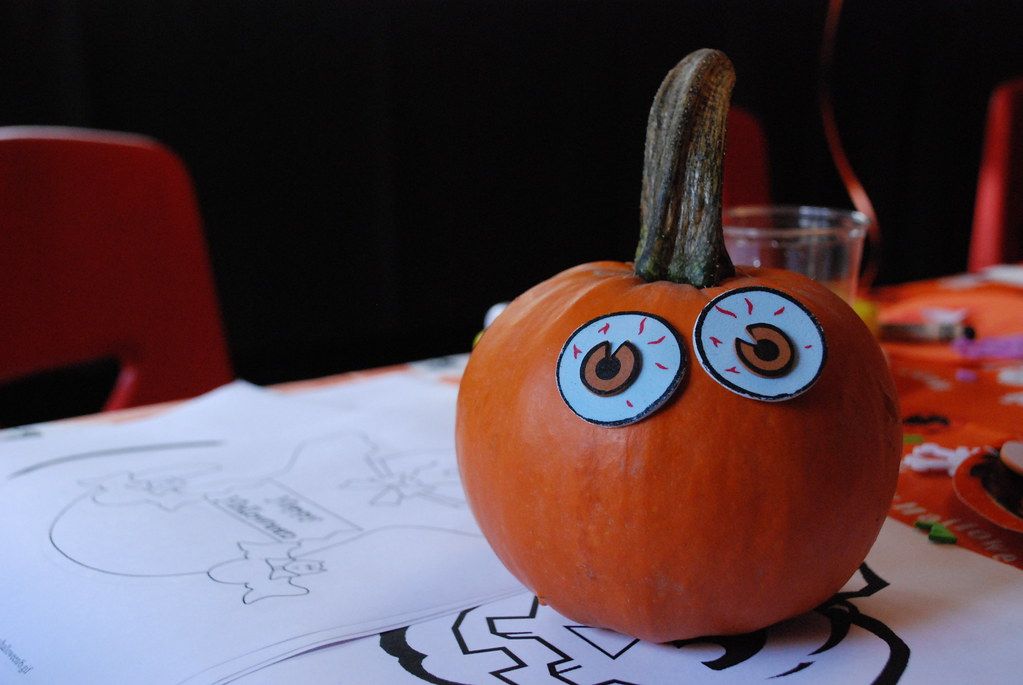
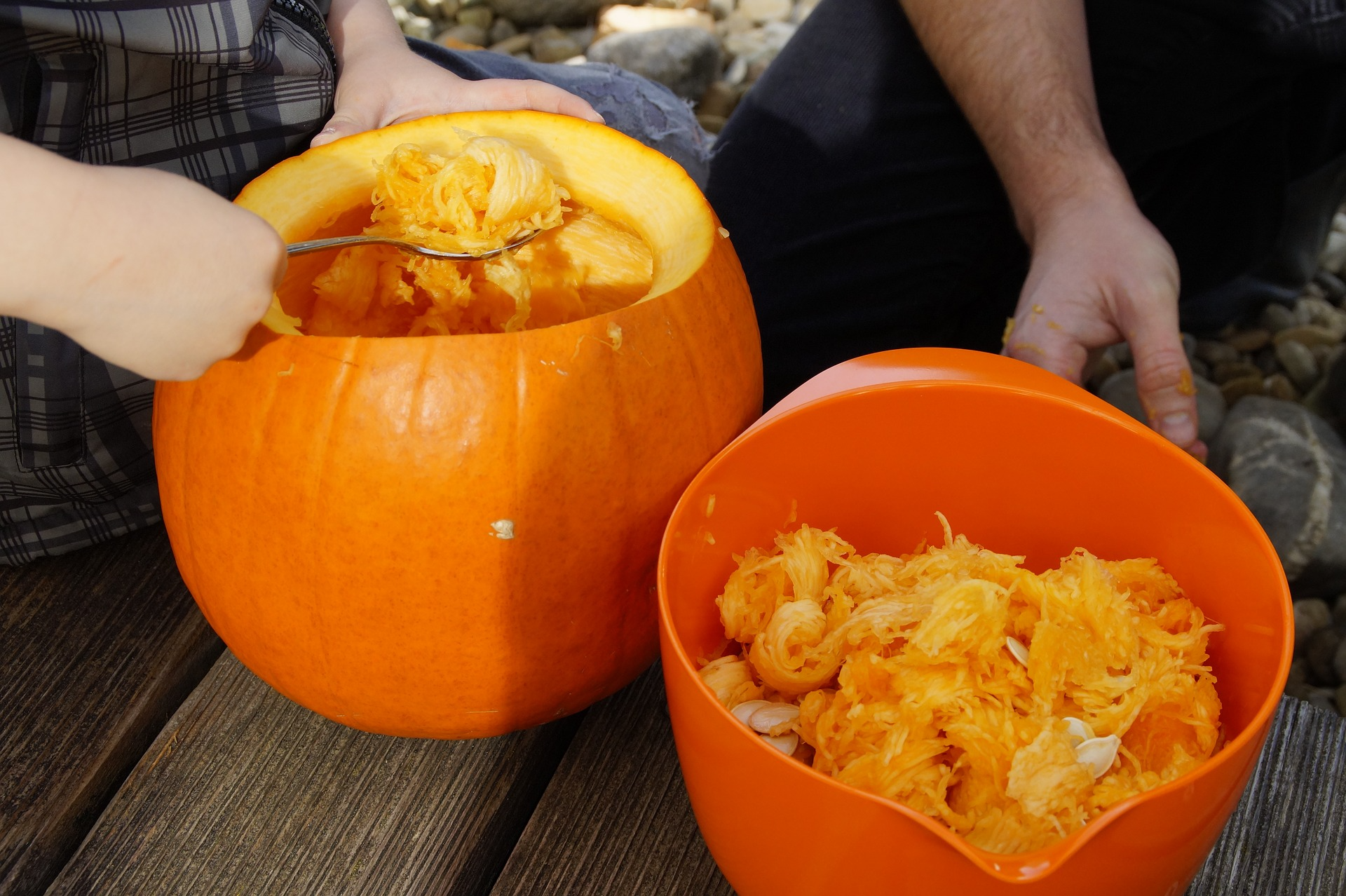
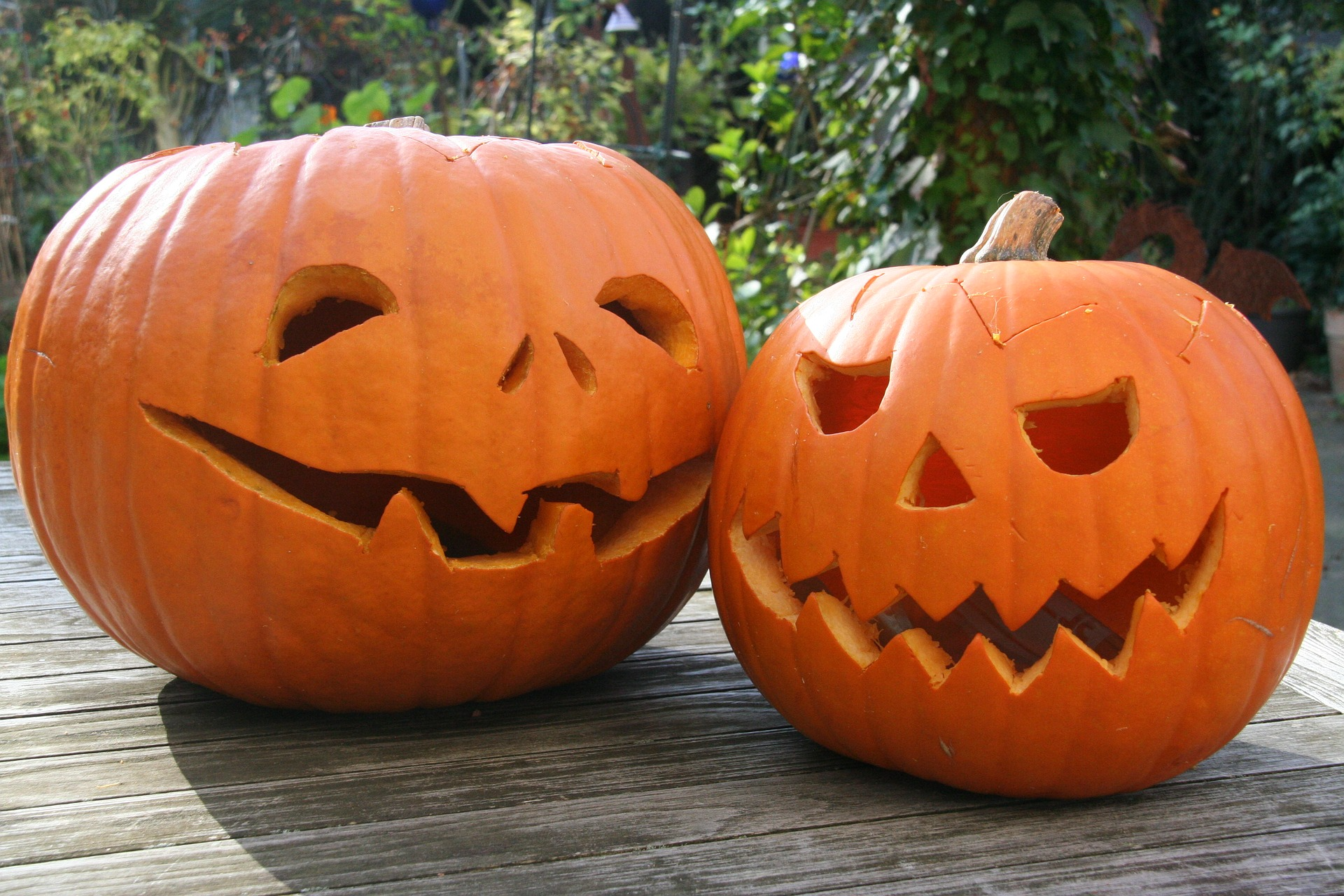
Looking for fake pumpkins and arts and craft supplies? Check out some of the links below:
Classic Jack-O-Lantern
Materials:
Medium to large pumpkin
Writing utensil
Serrated knife
Spoon
Small candle/tea light
Lighter
Directions:
- Draw a circle around the stem of the pumpkin and stencil areas around the face you wish to carve
- With adult assistance or supervision, use the knife to cut a hole around the stem (following the circle outline)
- Use the spoon or your hands to remove all seeds and insides of the pumpkin and dispose (or save to bake at another time!)
- Use the knife to carve into the face design that was initially stenciled
- Place the candle/tea light within the pumpkin and light!
Sparkly mini pumpkins
Materials:
Mini or small pumpkin
Glitter (single or multiple colors)
Adhesive spray
Tape
Spoon
Directions:
- If you do not want glitter on your stem, cover with tape to protect from adhesive (tip: use tape to cover wherever you want your pumpkin to be glitter free!)
- Use adhesive spray to coat the pumpkin
- Take the spoon to sprinkle glitter over the area sprayed with adhesive
- Shake the pumpkin gently and let the loose glitter fall off
- Repeat if desired or to add combinations of colors
Funny face pumpkins
Materials:
Any sized pumpkin
Face materials (use materials of your choosing - e.g., felt fabric sheets, googly eyes, sparkly cotton balls, etc.)
Scissors
School or tacky glue
Directions:
- Select the material(s) of your choosing for your pumpkin’s facial features
- If using something like tissue paper or felt fabric, use the scissors to cut into shapes (you will at minimum need 2 eyes, 1 nose, and 1 mouth)
- Gently squeeze the glue on the back of each body part to be placed
- Continue until you have placed all desired body parts on the pumpkin
Spooky scary pumpkin
Materials:
Any sized pumpkin
Cotton balls
Black spray paint
Pack of plastic spiders
Adhesive spray (if needed)
Directions:
- Coat the entire pumpkin with the back spray paint
- Gently pull apart the fibers of the cotton balls to get a spider-web/cobweb appearance
- Wrap the pulled apart cotton balls around the pumpkin and stem (if needed, also use adhesive spray for this step)
- Place desired amount of plastic spiders within the web of cotton balls
Mummy pumpkins
Materials:
Any sized pumpkin
Cheesecloth or gauze
Tape
Adhesive spray
Googly eyes
School or tacky glue
Hairspray
Directions:
- If you do not want decor on your stem, cover with tape to protect from adhesive
- Use adhesive spray to coat the pumpkin
- Take the cheesecloth or gauze and wrap around the entire pumpkin, leaving a small slit towards the top on one side (for the eyes)
- Use the school or tacky glue to paste the last thread of the cheesecloth/gauze to the pumpkin
- Use the school or tacky glue and apply to the googly eyes
- Place the googly eyes in the small exposed slit on the pumpkin’s surface
- Spray the coat of the cheesecloth/gauze with hairspray to stiffen
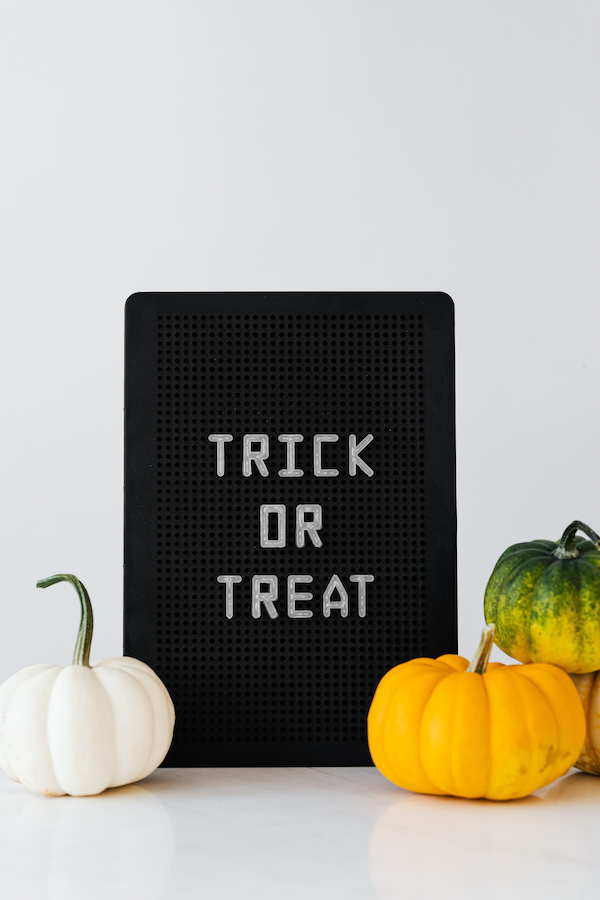

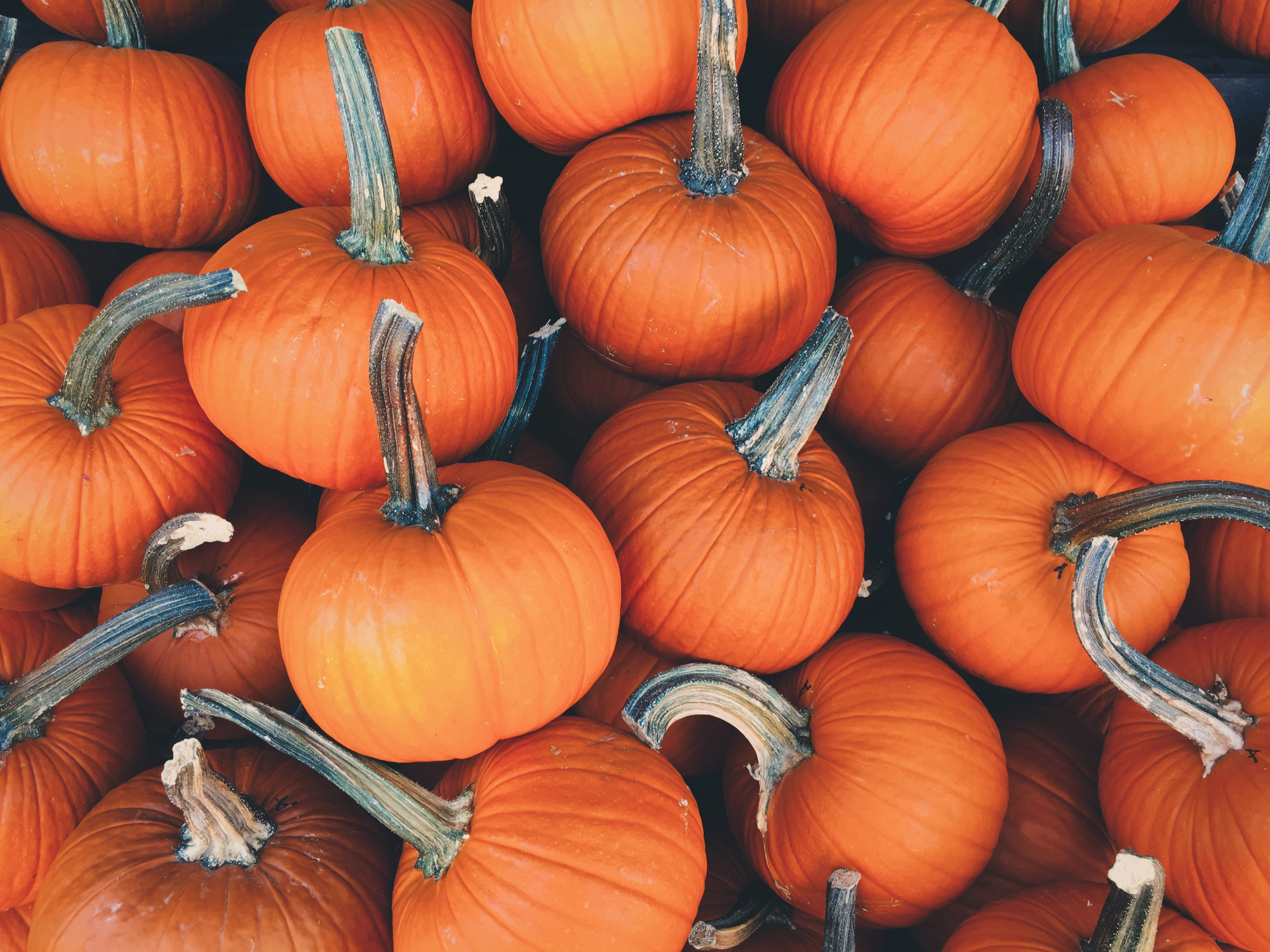
![How to Write Apraxia Goals [with goal bank]](https://www.communicationcommunity.com/content/images/2024/07/Apraxia-Goals--1-.png)
